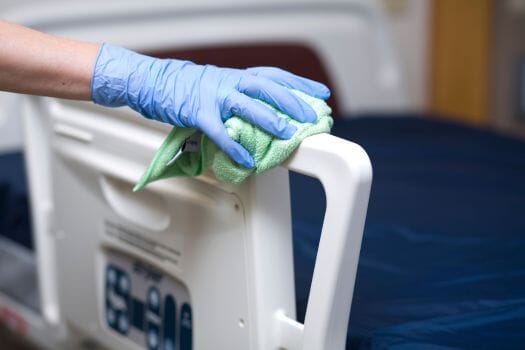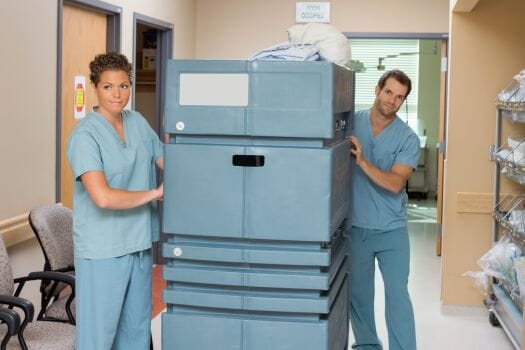Use of microfiber for cleaning in hospitals
-(1)_001.png)
Why do successful Environmental Services programs use microfiber for cleaning in hospitals?
When it comes to effective disinfection, terrycloth and disposable wipes produce unsatisfactory results. To properly disinfectant an environment, an EVS program must be supplied with the appropriate tools to be successful: microfiber and/or microdenier cloths.
When applying disinfectant, a key step is the removal of dirt through mechanical friction such that the chemical is applied to the actual surface. Microfiber’s pocketed texture and positive charge assists in capturing dirt and debris more effectively than traditional wipes. It’s increased size and absorbent nature allows EVS aides to reduce the amount of cloths necessary per area cleaned. This is both more productive and better at ensuring a safe patient environment.
_003.png)

Xanitos always incorporates the best reusable microfiber and microdenier cleaning products in our cleaning procedures to comprehensively clean and disinfect the hospital environment.
Do’s:
- Apply mechanical friction during the cleaning process to remove dirt and debris so that the disinfectant can directly reach the targeted surface.
- Use different colored microfiber cloths for each room (ie. patient room and restroom). This signals to the patient that steps are being taken to avoid cross contamination.
- By folding the microfiber cloth, EVS aides can maximize the usable surface of each cloth and make full use of microfiber’s absorbent properties.
- Microfiber mops, properly pre-soaked in cleaning solution, eliminates the need for traditional buckets/wringers, reducing cross contamination and cleaning times for patient rooms.
Don’ts:
- Avoid oversaturating microfiber cloths with disinfectant as this reduces the efficacy of microfiber’s gripped texture and potentially damages surfaces.
- Don’t forget to inspect microfiber cloth quality. Subsequent launderings may diminish fiber quality and affect the efficacy of the cleaning tasks being performed.
- Don’t skip training! Even with the correct tools, EVS aides require specialized education before they can properly complete the tasks expected. Adherence to hospital policies and procedures requires continuous retraining and rigorous quality assurance programs.

PerfectCLEAN® Microdenier: Xanitos’ recommended fabric for surface disinfection
“Quat Binding” occurs when the common active ingredient in disinfectants (quaternary ammonium chloride) becomes attracted to and absorbed into fabrics. The science behind how this happens is simple: Quats are positively charged ions and cotton and other natural textiles are negatively charged; positive attracts negative (terrycloth wipes contain cotton). The result is that at least a portion of the quat does not end up on the surface it is supposed to be disinfecting.
In fact, one study found that the quat level of a disinfectant remaining on a cotton cloth placed in a solution-filled pail was decreased by 50 percent after soaking for just 10 minutes. That means the solution applied to the surface would contain only half of the parts per million (ppm) listed on the label and not be effective, leaving the patient at risk. Since Microdenier is made from a synthetic fiber, the phenomenon of “Quat Binding” does not occur.
Contact us today for free consultation with our industry experts. Xanitos is committed to helping save lives and will help you find the solution you need.






